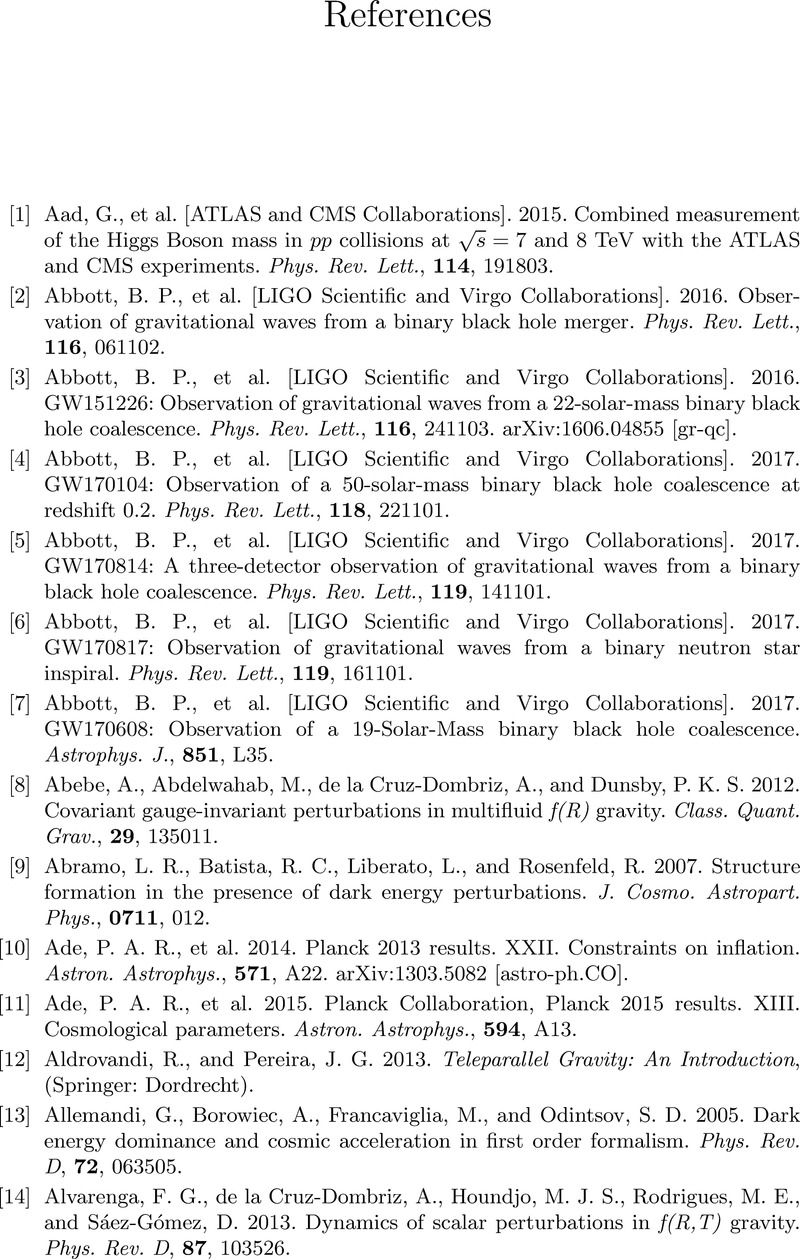References
Published online by Cambridge University Press: 10 November 2018
Summary

- Type
- Chapter
- Information
- Extensions of f(R) GravityCurvature-Matter Couplings and Hybrid Metric-Palatini Theory, pp. 422 - 445Publisher: Cambridge University PressPrint publication year: 2018



